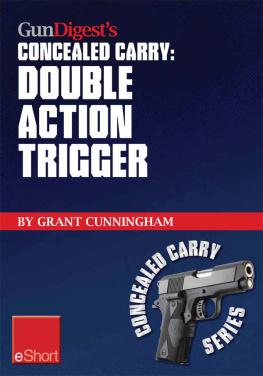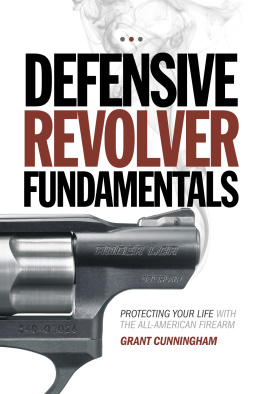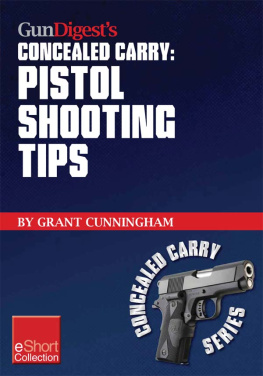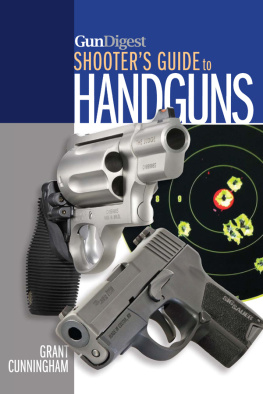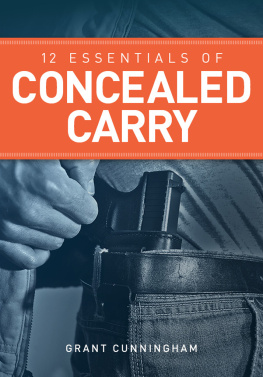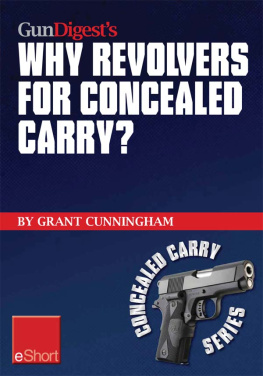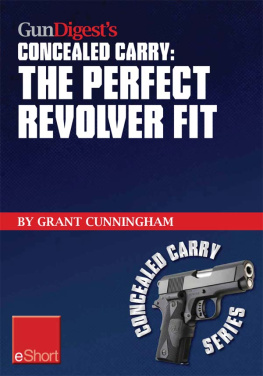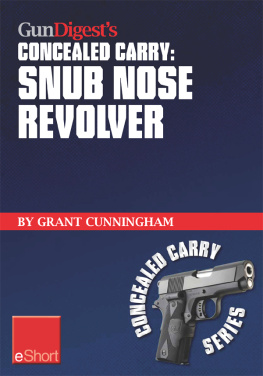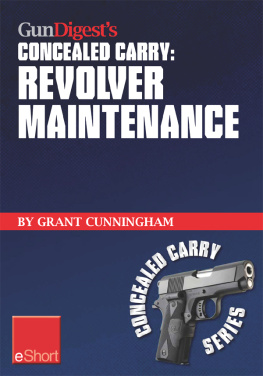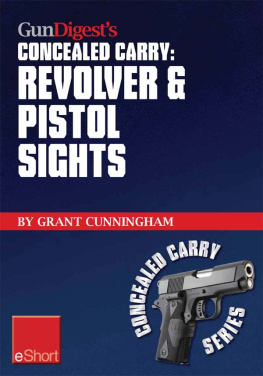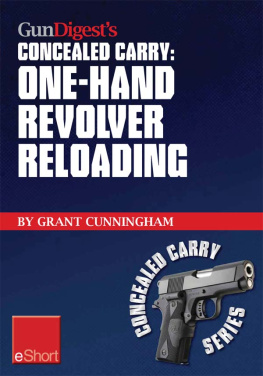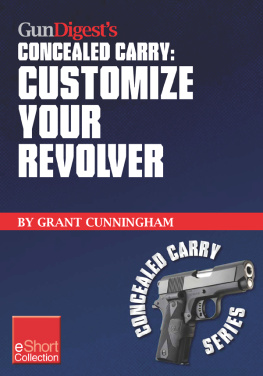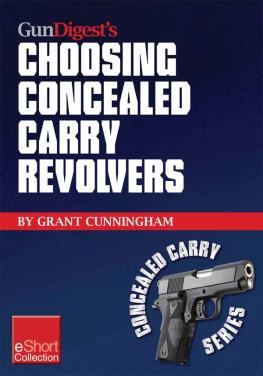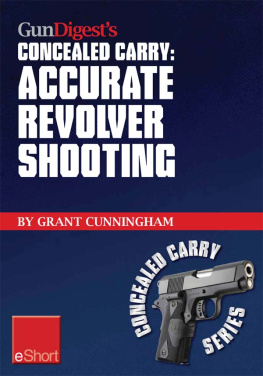Grant Cunningham - Gun Digests Double Action Trigger Concealed Carry eShort
Here you can read online Grant Cunningham - Gun Digests Double Action Trigger Concealed Carry eShort full text of the book (entire story) in english for free. Download pdf and epub, get meaning, cover and reviews about this ebook. year: 2012, publisher: F+W Media, genre: Home and family. Description of the work, (preface) as well as reviews are available. Best literature library LitArk.com created for fans of good reading and offers a wide selection of genres:
Romance novel
Science fiction
Adventure
Detective
Science
History
Home and family
Prose
Art
Politics
Computer
Non-fiction
Religion
Business
Children
Humor
Choose a favorite category and find really read worthwhile books. Enjoy immersion in the world of imagination, feel the emotions of the characters or learn something new for yourself, make an fascinating discovery.
- Book:Gun Digests Double Action Trigger Concealed Carry eShort
- Author:
- Publisher:F+W Media
- Genre:
- Year:2012
- Rating:3 / 5
- Favourites:Add to favourites
- Your mark:
- 60
- 1
- 2
- 3
- 4
- 5
Gun Digests Double Action Trigger Concealed Carry eShort: summary, description and annotation
We offer to read an annotation, description, summary or preface (depends on what the author of the book "Gun Digests Double Action Trigger Concealed Carry eShort" wrote himself). If you haven't found the necessary information about the book — write in the comments, we will try to find it.
In this excerpt from the Gun Digest Book of the Revolver, Grant Cunningham shows the proper grasp, finger position and trigger control for fast, accurate double action revolver shooting.
Gun Digests Double Action Trigger Concealed Carry eShort — read online for free the complete book (whole text) full work
Below is the text of the book, divided by pages. System saving the place of the last page read, allows you to conveniently read the book "Gun Digests Double Action Trigger Concealed Carry eShort" online for free, without having to search again every time where you left off. Put a bookmark, and you can go to the page where you finished reading at any time.
Font size:
Interval:
Bookmark:

Bring the pad of the support hand thumb down on top of the shooting hands thumbnail. Adjust as necessary to get the specified contact points and make a mental note of how everything feels. Its that feeling that youll want to replicate each time you grasp the gun.
Believe it or not, there was a time in the history of the double action revolver when it was widely supposed that it couldnt be shot accurately. Over the years weve come to learn that it just isnt true, and today many instructors say that learning to shoot a double action is the key to shooting all handguns well.
Thats what this chapters about. Shooting a double action revolver well is all about mastering the heavy, long trigger travel. Ive often said that the revolver is the easiest gun to shoot, but the most difficult to shoot well. The trigger is the reason, but its far from impossible to conquer. Its just a matter of paying attention to the basics.
If youve read my introduction, youll remember the story about the falling plates. There is a lesson to be learned, and I hope youll take it to heart: you have to commit yourself to shooting double action. Its all too easy to allow yourself to cock the gun to single action in order to make a shot youve been missing in double action. Resist that temptation! Every time you take the easy way out you stop your forward progress. Even at the end of a practice session, dont succumb to the idea that you need to leave on a high.
The only way to master double action is to always shoot in double action.
It starts with grasp
Think about this: a six-shot revolver might weigh something in the neighborhood of 38 ounces or so; thats about 2-1/4 pounds. The trigger weight on that gun will typically be something around 12 pounds. It doesnt take a math whiz to realize that the shooting hand will need to control about 9-3/4 pounds of excess force, and it needs to do so over a travel of perhaps 3/4 of an inch.
If the grasp isnt solid, that extra 9-3/4 pounds of force is going to push the gun around in the hand(s). The grasp has to be strong enough to control that nine pounds of force applied to the trigger, and it just cant be done with the kind of light handshake hold advocated by target shooters!
Its necessary to tighten this grasp to hold the gun steady during actual shooting. Hold the gun at arms length and squeeze with both hands. Increase the pressure until your hands shake from the effort, then back off the pressure just enough to stop the trembling. Youll notice that this is much more pressure than you would otherwise exert, and it is the amount you need to apply every time you achieve your shooting grasp.
Youll find, with even occasional practice, that your muscles will rapidly develop from this isometric exercise. The strength of your grasp will increase and youll have increasing control over your gun.
Big hands - little gun
On occasion Ill encounter a shooter whose large hands and small gun present a challenging mismatch. In these cases it can become difficult, if not impossible, for the trigger finger to complete the trigger stroke without bumping into the support hand thumb. In these cases I recommend that the support thumb be placed higher on the shooting hand thumb, on or just past the first thumb knuckle. This is usually sufficient to cure interference issues.
In some cases even that isnt enough. For those with very large hands it can sometimes be necessary to wrap the thumb around the backside of the gun, crossing the backside of the shooting hand thumb.
This is recommended only in very rare cases, because it presents a couple of risks. First, if shooting a revolver with a hammer its easy for the thumb to interfere with the hammer spur. This can keep the hammer from traveling back far enough, effectively preventing the gun from firing.
Second, if the person in question also owns autoloading pistols and mistakenly does this while shooting one, his thumb can suffer severe lacerations from the rearward moving slide. In such cases its not unusual to have the damage go clear down to the bone. I only recommend this technique for people who absolutely need it, and absolutely will not be shooting autoloading pistols.
Sometimes I find shooters with very long thumbs, where the trigger finger actually contacts the shooting hand thumb even with the thumb curled down. In these cases its necessary to modify the finger placement on the trigger, using the pad of the finger rather than the first joint. This is less desirable because of the reduced leverage the trigger finger can employ, but it is occasionally the only way to be able to shoot the gun.
Attaching oversized grips, particularly if fitted to the individuals hand, is usually the best way to address these problems. Properly sized grips can go a long way in eliminating some of these problems.
While ones choices in weaponry can be a touchy subject, in the cases of severe size mismatch the best solution is often to get a different gun. Of course that means changes to accommodate the lessened concealability, but is at least worth consideration.
Finger placement is critical
Back in Chapter Two I mentioned that fitting the gun to the hand was important to be able to shoot a revolver well, and that the key to fitting was the trigger fingers position on the trigger. If you havent read that chapter to verify that your gun fits your hand, please go back and study. With the amount of force and movement that the revolver requires of your trigger finger, the better the gun fit the easier trigger control will be.
While occasionally there will be some mild disagreement from small segments of the revolver community, most trainers Ive met recognize that the optimum trigger finger position is at the first joint (known as the distal interphalangeal joint, for the anatomy students in the audience.) Some trainers go so far as to call this the power crease, because it seems to result in more force being applied by the muscles.
Like so many others, Ive found that this position ideally centered on the trigger face gives the best combination of leverage against trigger weight. This mechanical advantage also allows for better control of the trigger. The finger doesnt tire as quickly, and movement is smoother. With a little bit of practice, the first joint placement allows the shooter to manipulate the trigger with as little imparted motion to the gun as possible.
In times past it was taught that the pad of the finger should be the surface that pressed on the trigger. While there are still a few prominent (and very successful) shooters and trainers who champion this method, I think its safe to say that the majority opinion has long since shifted to the distal joint position, and not just for revolver shooting.
As Ive mentioned, a gun that is a bit small for the hand is much easier to deal with than one which is too large. If yours is too large, or perhaps just borderline, consider a change in either the grips or the gun itself to something which better fits your for the job of practicing trigger control. Once youve mastered the double action trigger you can make do with a large gun, but starting out with such a size mismatch makes learning more difficult.
Terminology and preferences
In the following discussion I use some very specific terminology for the act of moving the trigger. There are also terms I dont use for very specific reasons, mainly because theyre either not descriptive or put the wrong preconception into the shooters mind. Is this point of view overblown? Some might say so, but I believe that when learning to perform a physical skill a solid, consistent visualization is important.
Font size:
Interval:
Bookmark:
Similar books «Gun Digests Double Action Trigger Concealed Carry eShort»
Look at similar books to Gun Digests Double Action Trigger Concealed Carry eShort. We have selected literature similar in name and meaning in the hope of providing readers with more options to find new, interesting, not yet read works.
Discussion, reviews of the book Gun Digests Double Action Trigger Concealed Carry eShort and just readers' own opinions. Leave your comments, write what you think about the work, its meaning or the main characters. Specify what exactly you liked and what you didn't like, and why you think so.

